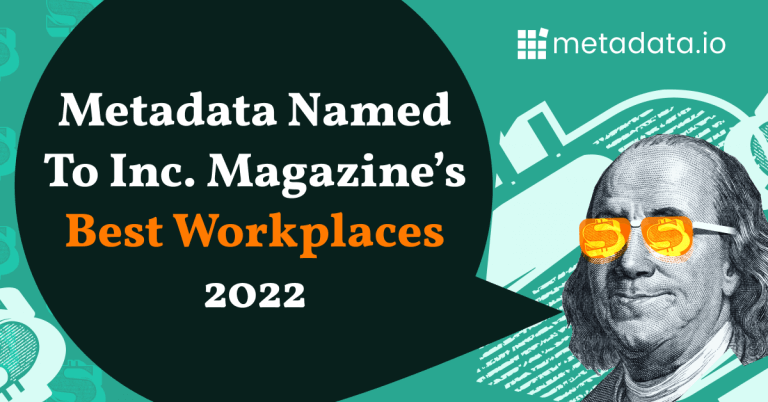You should expect more from your programmatic dollars
As an AdOps lifer, I spend a lot of time thinking about the most efficient application of ad spend and which channels to leverage for the best ROI. Now more than ever, having a coherent strategy and the foresight to execute it effectively are critical, but not so different than how we might have applied the lessons of the past decade in a pre-pandemic landscape. While B2C performance marketing will remain largely unchanged (e.g. find the best user at the best time with the best message at the lowest cost CPM), at Metadata we’re seeing a unique opportunity to reevaluate what we know about B2B demand generation and how we use the various channels and strategies to achieve more with less.
Most Users Overlook Programmatic Display–Here’s Why You Shouldn’t
While there’s no one silver bullet in terms of strategy, Metadata has spent the last two years studying, analyzing, and testing what we believe to be the optimal strategy for Programmatic Display. We are excited to work with our client partners on crafting full-funnel solutions that we are confident will bring not only better quality to top of funnel prospects, but also help turn those into qualified leads as we nurture them through the funnel and ultimately, to Closed-Won Opportunities.
By way of a garden analogy, we start with the seeds, or in our case those fledgling prospects that we hope to one day grow into robust fruit that we can harvest repeatedly. I see a not-insignificant number of brand dollars committed to Social channels, specifically Facebook and LinkedIn, with very little attention paid to Display Programmatic. When we approach new clients about this trend, the main feedback we get is 1) a lack of understanding of the capabilities of Programmatic and how to incorporate them into a global B2B strategy, 2) a level of distrust in the medium due to the Programmatic ‘race to the bottom’ in terms of inventory and strategy of the past 5 years, and 3) the inability to divorce low-funnel metrics from what we at Metadata believe to be the true value of the channel – driving low cost, highly engaged users to learn about and interact with the brand. I’ll attempt to address these concerns in this post and in the coming weeks will follow up with Best Practices and some case studies that we hope will provide some guidance on your future ad spend.
Where Most People Go Wrong
I’d like to start with establishing some common mistakes. The most egregious we typically see is failing to understand that Programmatic Display is not where you want to be focusing your low funnel messaging. While we’re able to apply ABM audiences in both channels, not only are match rates much smaller, making that inventory difficult to find and more expensive to target, but the click to conversion rates are consistently about 10x smaller than what we see in a social environment.
Rather, a solid Programmatic strategy should be almost exclusively focused on low cost brand awareness and site engagement. Across all Metadata campaigns of this type, we typically see CPC’s that are 60-70% less than Facebook and LinkedIn ($1-3 vs. $5-10+), often including secondary costs for data, DSP fees, and vendor costs, colloquially referred to as “the ad tech tax.” These lower costs also allow for broader multivariate testing and can refine your mid and lower-funnel social strategies when CPM’s go up and execution against a more refined audience becomes critical.
The second biggest blunder we see in channel is the propensity to run audiences that are limited in scope and focused on limited ABM lists, a trend that we’ve been able to step back from in recent weeks and evaluate in terms of effectiveness. With a top of funnel, broad reach strategy focused on prospecting, we’re able to widen the net and set the stage for brand awareness, affinity, and recall down the road so that those precision target accounts are never stale.
How MetaMatch Can Supercharge Your Programmatic Strategy
As an industry, we’re all stuck in a holding pattern for IP targeting until people begin populating offices with dedicated IPs that allow for us to really hone in on those target companies. Metadata has found a way around this problem through our audience building technology, MetaMatch, which can identify individual users based on title and function at those companies and then export them for cookie-matching and targeting in a display environment. These broad firmographic audiences, when combined with highly relevant messaging and incentives (case studies, white papers, etc.) often see engagement rates 2-3x industry benchmarks from your typical programmatic strategy. What’s more, these are the exact same users we see again in a social environment, which allows for stronger message continuity and greatly increases the chances that not only has a given prospect heard of your brand, but interacted with it at some point, making it that much easier to move them into SQL/MQL buckets.
Now more than ever, following campaign best practices and making the most of increased traffic, lower CPMs, and a near captive audience, are essential for many ad-based businesses if they want to survive dwindling budgets and increased scrutiny for performance. For a more detailed consultation on how to best put your limited resources to use, please reach out to book a demo and check back frequently for more insight on Programmatic creative and targeting strategies. Thanks for reading, and happy selling.


